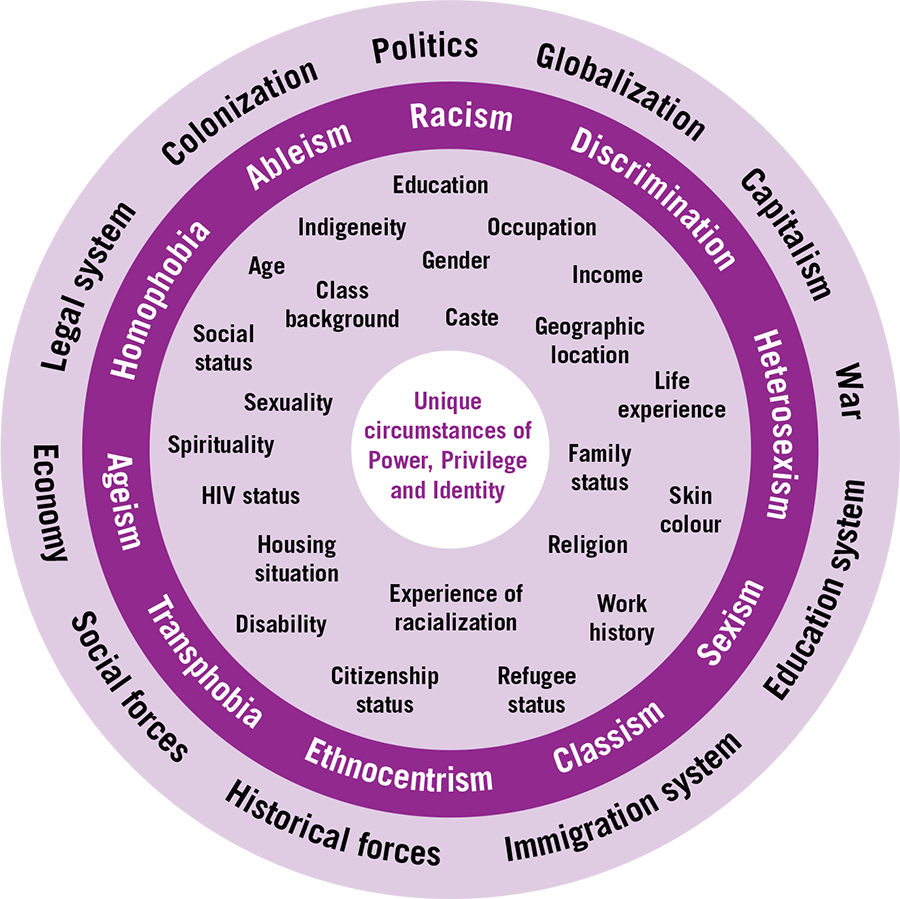
Prevention & Education
What is Prevention?
Preventing violence means addressing the root causes of interpersonal violence and equipping folks with the tools to stop violence before it starts. Keep reading to learn about the theories and approaches that inform CARE’s prevention work. View Prevention Guiding Principles for more on this topic.
Theories and Approaches
Social Ecological Model
Preventing violence requires understanding how individual, interpersonal, community, and societal factors interact and overlap. The social-ecological model helps us better address harm occurring across multiple levels and factors. It provides a visualization of overlapping factors that shape people, relationships, communities, and cultures (CDC, 2022). This model can be a helpful tool in being more intentional when designing prevention programming and understanding how a program best suits the complex identities and experiences of our audience.

Levels of Prevention
A popular analogy in the public health field to conceptualize the levels of prevention is the River Story. This story situates the levels of prevention along a river where there is a broken bridge and people keep falling in.

- Tertiary prevention assists people experiencing crisis, those who have been in the river the longest and need immediate support for recovery and healing.
- Secondary prevention focuses on early response for folks who have fallen into the river to reduce the risk of further harm or crisis.
- Primary prevention focuses on going upstream to the broken bridge, working together to repair the structures allowing folks to fall in the first place.
- CARE Advocates practice secondary and tertiary prevention, which includes helping gain accommodations for academics, housing, work, or transportation as well as safety planning, emotional support, reporting support, warm handoffs to other resources, and facilitating spaces for survivors to be in community.
- CARE Prevention Education focuses on primary prevention, approaches implemented before interpersonal violence has occurred to prevent future harm. Strategies we utilize in prevention include promoting social norms that foster a culture of consent and protect against violence. These strategies include creating space for conversations on bystander intervention and allyship, as well as teaching skills to prevent violence, such as practicing healthy, sustainable relationships, and promoting healthy sexuality (CDC, 2016).
Intersectionality
In 1989, feminist scholar, writer, and legal advocate Kimberlé Crenshaw coined the term Intersectionality. This framework allows us to understand how multiple power structures and social categorizations interact to shape individuals’ and communities’ experiences of power, privilege, and oppression.
Intersectionality is a guiding principle of CARE and an important facet of our prevention strategies. Understanding power, oppression, privilege, and identity is necessary to work toward social justice and make lasting, equitable changes for survivors and community members who exist at the intersection of multiple systems of oppression.

CARE receives funding from the Equity in Mental Health Funding Plan, which works towards health equity, supporting healthy campuses and students through universal prevention, early intervention, and treatment services. CARE’s primary prevention, outreach, peer education, and promotion of healthy, sustainable behaviors serve Tier 3: Comprehensive Universal Prevention and Wellness Programs. This program allows our Prevention Education Coordinators and Peer Educators to contribute to student wellness and academic success and strengthen student mental health to serve historically underserved populations and the wider campus community through programming and outreach.
Peer Education
Peer-to-peer education is an evidence-based strategy that effectively improves health-related knowledge and promotes behavior change that leads to positive health outcomes. Our workshops and presentations are primarily facilitated by students for students – we strive to create peer education programs that represent UCSC’s diverse student population, engage different students’ experiences and perspectives, and meet different communities’ needs across campus.



CARE’s student staff team includes:
- Peer Educators
- Chancellor’s Undergraduate Program Interns (CUIP)
- Creative Engagement Specialists
Peer Educators and CUIPs work collaboratively to plan prevention events, table at resource fairs, and strengthen partnerships with offices and resource centers across campus. Each Fall, CARE student staff take the NASPA Certified Peer Educator training as part of their orientation to understand topics in the field of interpersonal violence prevention, strengthening their knowledge of foundational peer education theories, facilitation skills, and event planning.
Creative Engagement Specialists develop flyers, Instagram posts, infographics, and other visual materials to promote CARE events and services through our social media and quarterly newsletter.
How to apply:
CARE posts open positions for CUIP interns each winter, with applicants being matched to host offices in the spring for internships that start the following academic year. Applications for Peer Educators and Creative Engagement Specialists are posted in the spring for the following academic year. CARE hires both work-study and non-work-study students. All hiring for student staff is done through Handshake, and hiring announcements are shared on CARE’s website on the Student Involvement Opportunities page and via our Instagram (@ucsantacruz_care).
Stay tuned for ways to get involved and join our team!